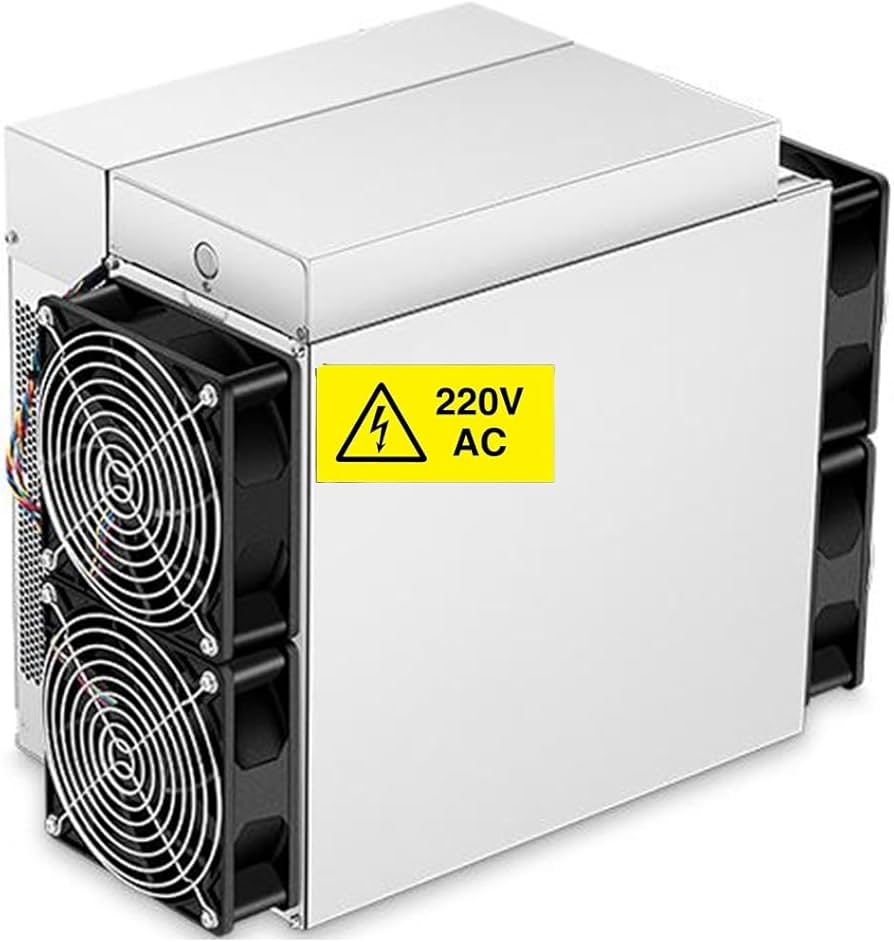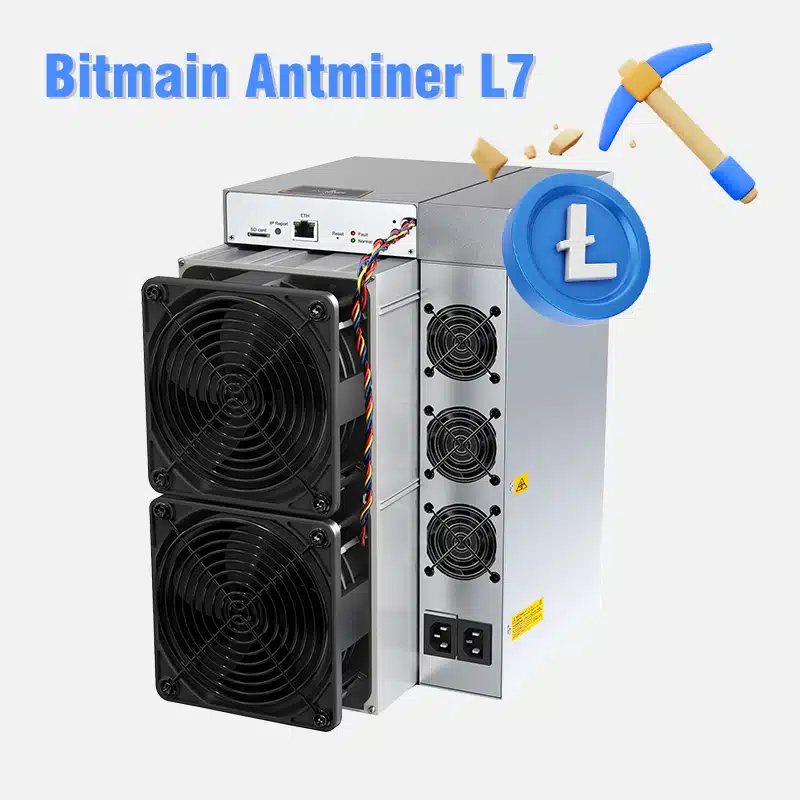Litecoin Miner L7 Software Configuration for Optimal Performance
The cryptocurrency mining landscape is constantly evolving, and staying ahead requires not only powerful hardware but also efficient software configuration. The Litecoin Miner L7, developed by Bitmain, is a standout solution for mining Scrypt-based cryptocurrencies like Litecoin (LTC), Dogecoin (DOGE), and Beldex (BEL). With its industry-leading hashrate of 9050 MH/s (±3%) and power efficiency of 0.36 J/MH (±5%), the L7 is a powerhouse in the mining world. However, to truly unlock its potential, proper software configuration is essential. This article will guide you through optimizing your L7 miner’s software settings for maximum performance, reliability, and profitability.
Understanding the Litecoin Miner L7
Before diving into software configuration, it’s important to understand what makes the L7 a top choice for miners. Designed by Bitmain, a trusted name in the industry, the L7 combines cutting-edge technology with user-friendly features. Its compatibility with the Scrypt algorithm allows it to mine multiple cryptocurrencies, making it a versatile addition to any mining operation. Additionally, its compact design, global adaptability, and robust construction ensure it can thrive in diverse environments.

However, even the best hardware needs proper setup to perform at its peak. The L7’s software configuration plays a critical role in determining its efficiency, stability, and overall output. Let’s explore how to optimize these settings step by step.
Step 1: Initial Setup and Firmware Update
Connecting the L7 Miner
Once your L7 miner is physically set up and connected to power and the internet, the first step is to access its web interface. This is typically done by entering the miner’s IP address into a web browser. If you’re unsure of the IP address, tools like Angry IP Scanner or your router’s device list can help locate it.
Updating the Firmware
Bitmain regularly releases firmware updates to improve performance, fix bugs, and add new features. Before configuring your miner, ensure it’s running the latest firmware. To update:
- Download the latest firmware from Bitmain’s official website.
- Navigate to the “Upgrade” section in the miner’s web interface.
- Upload the firmware file and follow the on-screen instructions.
Updating the firmware ensures your miner operates with the latest optimizations and security patches.
Step 2: Configuring Mining Pool Settings
Choosing the Right Mining Pool
Mining pools are essential for consistent earnings, especially for individual miners. When selecting a pool, consider factors like pool fees, payout methods, and server locations. Popular options for Scrypt mining include ViaBTC, F2Pool, and Antpool.
Setting Up the Pool
To configure your mining pool:

- Log in to the L7’s web interface.
- Navigate to the “Miner Configuration” section.
- Enter the pool’s URL, port number, and your wallet address.
- Save the settings and restart the miner.
For redundancy, it’s recommended to configure at least two pools. This ensures your miner continues operating if one pool goes offline.

Step 3: Optimizing Hashrate and Power Efficiency
Adjusting Frequency and Voltage
The L7’s default settings are designed for balanced performance, but fine-tuning can yield better results. Overclocking (increasing frequency) can boost hashrate, while undervolting (reducing voltage) can improve power efficiency. However, these adjustments should be made cautiously to avoid overheating or hardware damage.
To adjust these settings:

- Access the “Advanced Settings” section in the web interface.
- Gradually increase the frequency and monitor the hashrate and temperature.
- If the miner becomes unstable, reduce the frequency slightly.
- Similarly, lower the voltage incrementally to reduce power consumption without compromising performance.
Monitoring Temperature
The L7 operates optimally within a temperature range of 0°C to 40°C. Use the miner’s built-in temperature monitoring tools to ensure it stays within this range. If temperatures rise too high, consider improving ventilation or adding cooling solutions.
Step 4: Automating Maintenance and Monitoring
Using Remote Management Tools
Bitmain’s Antminer Controller app allows you to monitor and manage your L7 miner remotely. This is particularly useful for large-scale operations or miners who are frequently on the go. The app provides real-time data on hashrate, temperature, and power consumption, enabling quick adjustments as needed.
Setting Up Alerts
Configure email or SMS alerts to notify you of critical issues like hardware failures, overheating, or connectivity problems. This proactive approach minimizes downtime and ensures your miner operates smoothly.
Step 5: Regular Maintenance and Troubleshooting
Cleaning and Inspecting the Miner
Dust and debris can accumulate inside the miner, reducing its efficiency and lifespan. Regularly clean the fans, heat sinks, and other components using compressed air. Additionally, inspect the power supply and cables for signs of wear or damage.
Replacing Wearable Parts
The L7’s design includes easily replaceable accessories like fans and power supplies. Keep spare parts on hand to minimize downtime during maintenance.
Troubleshooting Common Issues
- Low Hashrate: Check for overheating, incorrect pool settings, or outdated firmware.
- Connectivity Problems: Ensure the Ethernet cable is securely connected and the router is functioning properly.
- Hardware Failures: Replace faulty components or contact Minerfixes for professional support.
Real-World Applications and Benefits
Small-Scale Miners
For individual miners, the L7’s compact size and low initial investment make it an accessible entry point into cryptocurrency mining. Proper software configuration ensures maximum returns on this investment.
Large-Scale Operations
In industrial mining farms, the L7’s efficiency and reliability translate to significant cost savings. Automated monitoring and maintenance tools streamline operations, allowing operators to focus on scaling their businesses.
Global Adaptability
The L7’s compatibility with various input voltages and frequencies makes it suitable for miners worldwide. Whether you’re in North America, Europe, or Asia, the L7 can be configured to meet local power standards.
Conclusion
The Litecoin Miner L7 is a powerful and versatile tool for mining Scrypt-based cryptocurrencies. By following the steps outlined in this guide, you can optimize its software configuration for peak performance, efficiency, and reliability. From updating firmware and selecting mining pools to fine-tuning hashrate and automating maintenance, each step plays a crucial role in maximizing your mining profits.
With Bitmain’s industry expertise and Minerfixes’ comprehensive support, the L7 is more than just a miner—it’s a long-term investment in the future of cryptocurrency. Whether you’re a seasoned miner or just starting out, the L7’s combination of cutting-edge technology and user-friendly design makes it an ideal choice for your mining operation. Take the time to configure it properly, and you’ll reap the rewards for years to come.